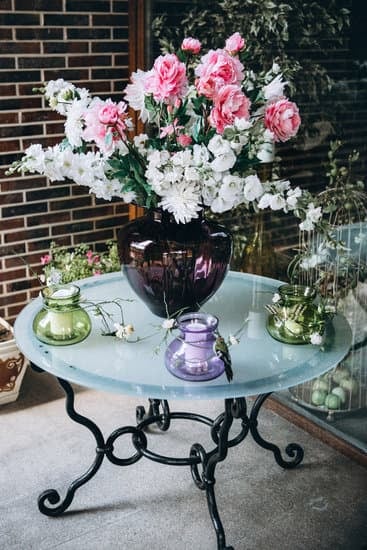Are you wondering how to address wedding invitations Emily Post? When it comes to wedding etiquette, one of the most revered names is Emily Post. Known for her expertise in social graces and proper conduct, she has set the standard for addressing wedding invitations with elegance and refinement. Understanding the importance of properly addressed wedding invitations is crucial in setting the tone for your special day and ensuring that your guests feel valued and honored.
Emily Post’s legacy in wedding etiquette has stood the test of time, and her traditional format for addressing wedding invitations continues to be a gold standard. By following her guidelines, you can ensure that your invitations reflect the respect and significance you hold for your guests as well as uphold timeless traditions that add an air of sophistication to your event.
In today’s modern world, there are alternatives and updates to the traditional format that still adhere to Emily Post’s principles while allowing for personalization and creativity. Navigating through common mistakes and learning tips and tricks for addressing wedding invitations will help ensure that your invites embody both classic elegance and personal flair.
Whether it’s addressing invitations for different types of guests or family members, there are specific etiquettes to follow – all of which will be explored in this comprehensive guide.
Understanding the Importance of Properly Addressed Wedding Invitations
Properly addressing wedding invitations is an important aspect of wedding etiquette, as it sets the tone for the event and shows respect to the guests. Emily Post, a renowned authority on etiquette, emphasizes the importance of correctly addressing wedding invitations to convey a sense of formality and consideration for the invitees. When done thoughtfully and accurately, addressing wedding invitations according to proper etiquette can enhance the overall guest experience and make them feel valued.
The traditional format for addressing wedding invitations according to Emily Post involves using specific titles and honorifics based on the marital status and gender of the recipients. This format reflects social norms and conventions that have been followed for many generations.
According to Emily Post’s guidelines, married couples are addressed differently from unmarried individuals or those with professional titles. The traditional format may include using “Mr.” and “Mrs.” for married couples, “Ms.” for unmarried women, and “Dr.” for individuals with medical degrees.
In today’s modern society, there are alternatives and updates to traditional etiquette when it comes to addressing wedding invitations. It is important to consider diversity, inclusivity, and personal preferences when addressing invitations. For example, same-sex couples may be addressed using their respective titles or as a unit without specifying gender-specific honorifics.
Additionally, couples who do not fit into traditional marital categories can be addressed in ways that reflect their unique relationship dynamics. These modern alternatives prioritize respectful and inclusive language while still maintaining an air of formality expected for such special occasions.
The Traditional Format for Addressing Wedding Invitations According to Emily Post
When it comes to addressing wedding invitations, following traditional etiquette guidelines can help you set the tone for your upcoming nuptials. Emily Post, a renowned authority on proper etiquette, has long been considered a go-to source for understanding the correct way to address wedding invitations. By following her traditional format, you can ensure that your invitations convey the respect and formality befitting such a special occasion.
According to Emily Post, the traditional format for addressing wedding invitations follows a specific set of guidelines:
- Use titles and full names: When addressing the outer envelope, use the appropriate titles (Mr. Mrs. Dr. etc.) followed by the full names of the recipients.
- Spell out words: Avoid using abbreviations or symbols in addresses. For example, “Street” should be spelled out as opposed to using “St.”
- List children separately: If children are invited, their names should be listed separately beneath their parents’ names.
- Use inner envelopes: The inner envelope should include only the titles and last names of the recipients without their addresses. This adds an extra touch of formality.
While these traditional guidelines may seem old-fashioned to some, they serve as a time-honored way to demonstrate respect and consideration for your guests. However, it’s essential to keep in mind that modern alternatives and updates to etiquette have also emerged in recent years.
In today’s world, couples often have diverse family structures and guest lists, so there is no one-size-fits-all approach when it comes to addressing wedding invitations. Emily Post’s timeless advice provides a solid foundation for understanding proper wedding invitation etiquette while allowing room for personalization and flexibility based on each unique situation.
Whether you choose to adhere strictly to tradition or incorporate modern updates, remember that the key is to communicate thoughtfully with your guests while setting the stage for a memorable celebration.
Modern Alternatives and Etiquette Updates for Addressing Wedding Invitations
Electronic Invitations and Online RSVPs
With the rise of technology, many modern couples are opting for electronic invitations and online RSVPs as an alternative to traditional paper invitations. When sending electronic invitations, it’s important to ensure that the design and wording still adhere to proper etiquette. Include all the necessary details such as dress code, RSVP date, and any other pertinent information. Additionally, make sure to provide a user-friendly platform for guests to easily RSVP online.
Gender-Neutral Addressing
In today’s society, gender roles and identities are evolving, leading to changes in how wedding invitations are addressed. Emily Post’s traditional etiquette typically followed strict rules based on gender (Mr. and Mrs.), but modern alternatives now allow for more inclusive options. Couples can use “Ms.” instead of “Miss” or “Mrs.” if they prefer not to indicate marital status.
When addressing same-sex couples, it is appropriate to use both names on the outer envelope (e.g. “Ms. Jane Smith and Ms. Sarah Johnson”).
Custom Stamps and Creative Seals
One way to add flair and personalization to wedding invitations is through custom stamps and creative seals on the envelopes. Custom stamps featuring the couple’s initials or a design that reflects their wedding theme can make a memorable impression when guests receive their invitations. Creative seals, such as wax seals with the couple’s monogram or a unique motif, can also add an elegant touch to the overall presentation of the invitation.
By staying informed about modern alternatives and etiquette updates for addressing wedding invitations according to Emily Post guidelines, couples can effectively navigate these decisions while ensuring their invitations are not only properly formatted but also reflect their personal style and values.
Common Mistakes to Avoid When Addressing Wedding Invitations
When it comes to addressing wedding invitations, there are a few common mistakes that people tend to make. One of the biggest mistakes is not being clear and specific with the names and titles of the recipients. It’s important to use the proper titles such as Mr. Mrs. Dr. etc. and to spell out the full names of each person who is invited.
Another common mistake is not providing enough information on the invitation. This can include leaving out important details such as the dress code, RSVP information, or any special instructions for the guests. It’s essential to make sure that all necessary information is included so that guests know what to expect and how to respond.
Lastly, one common mistake that should be avoided is addressing invitations too informally or casually. While some couples may prefer a more relaxed style, it’s still important to maintain a level of formality and respect when addressing wedding invitations, especially if you are following traditional etiquette guidelines from Emily Post.
Overall, it’s important to remember that addressing wedding invitations is an opportunity to show respect and consideration for your guests, so taking the time to do it properly is well worth the effort.
| Common Mistakes | How to Avoid |
|---|---|
| Not being clear and specific with names and titles | Use proper titles and spell out full names |
| Leaving out important details such as dress code or RSVP information | Make sure all necessary information is included |
| Addressing invitations too informally or casually | Maintain a level of formality and respect |
Tips and Tricks for Addressing Wedding Invitations With Flair and Personalization
Addressing wedding invitations is not just about following etiquette; it’s also an opportunity to add flair and personalization. One way to do this is by choosing unique and decorative fonts for the addresses. Hand-lettered calligraphy or elegant script can give your invitations a special touch that will surely impress your guests. If you’re not confident in your own lettering skills, consider hiring a professional calligrapher to address the envelopes for you.
Another way to add flair and personalization to your wedding invitations is by using custom stamps or seals. Instead of traditional postage stamps, consider using personalized stamps with your initials or a custom design that reflects your wedding theme. Wax seals are also a classic and elegant way to embellish your envelopes. These small details can make a big impact and show your guests that you’ve put thought and care into every aspect of your wedding.
When addressing wedding invitations, consider incorporating personal touches that reflect the style and theme of your wedding. For example, if you’re having a rustic outdoor ceremony, you might opt for kraft paper envelopes and natural twine to tie them closed.
If you’re planning a glamorous black-tie affair, choose luxurious envelopes and add a touch of sparkle with metallic ink or foil-lined envelopes. These details not only make your invitations stand out but also set the tone for the celebration to come.
But while it’s important to personalize your wedding invitations, it’s equally crucial to ensure that they are clear, concise, and easy to read. Fancy fonts and elaborate designs are fun, but they should never compromise legibility. Finding the right balance between flair and functionality will result in beautifully addressed invitations that are both stylish and practical.
| Addressing Wedding Invitations | Flair and Personalization |
|---|---|
| Hand-lettered calligraphy or elegant script | Adds a special touch |
| Custom stamps or seals | Reflects the wedding theme |
| Incorporating personal touches | Sets the tone for the celebration |
Addressing Wedding Invitations for Different Types of Guests and Family Members
Addressing Invitations for Married Couples
When addressing wedding invitations for married couples, it is traditional to address them using the husband’s title and full name followed by “and” and then the wife’s first name and maiden name. For example, “Mr. John Smith and Mrs. Emily Johnson.” However, in modern times, it is also appropriate to address the invitation using both partners’ first names without their titles, such as “John and Emily Smith”.
Addressing Invitations for Unmarried Couples
For unmarried couples living together, the standard etiquette is to address the invitations with both partners’ names on separate lines: “Miss Jessica Brown” on one line, “Mr. Michael Green” on the next line. If they are not living together, you should send separate invitations.
Addressing Invitations for Families With Children
When children are invited to the wedding along with their parents, their names should be listed underneath their parents’ names on the inner envelope or on a separate line below their parents’ names on the outer envelope.
Addressing Invitations for Single Guests
For single guests over 18 years old who do not receive a plus-one invitation, it is proper etiquette to address the invitation only to them using their full name without any titles or abbreviations.
Resources for Further Reference and Guidance on Addressing Wedding Invitations Emily Post
In conclusion, addressing wedding invitations according to the guidelines set by Emily Post and traditional wedding etiquette is an important aspect of wedding planning. The way you address your invitations sets the tone for your special day and shows respect to your guests. Understanding the traditional format for addressing wedding invitations, as well as modern alternatives and updates, can help ensure that your invitations are both elegant and inclusive.
While there are many resources available for further reference and guidance on addressing wedding invitations according to Emily Post, it is important to remember that the most essential element is personalization. Whether you choose to follow traditional etiquette or put a modern twist on your invitations, the key is to make sure that they reflect your personality as a couple.
When addressing wedding invitations, it’s important to keep in mind the specific needs of different types of guests and family members. From single guests to same-sex couples, there are thoughtful ways to address each invitation with care and consideration. By following these guidelines and using resources such as those provided by Emily Post, you can ensure that every guest feels valued and respected when they receive their invitation to your special day.

I have been involved in marriages for over 20 years helping couples and singles understand more about them.





